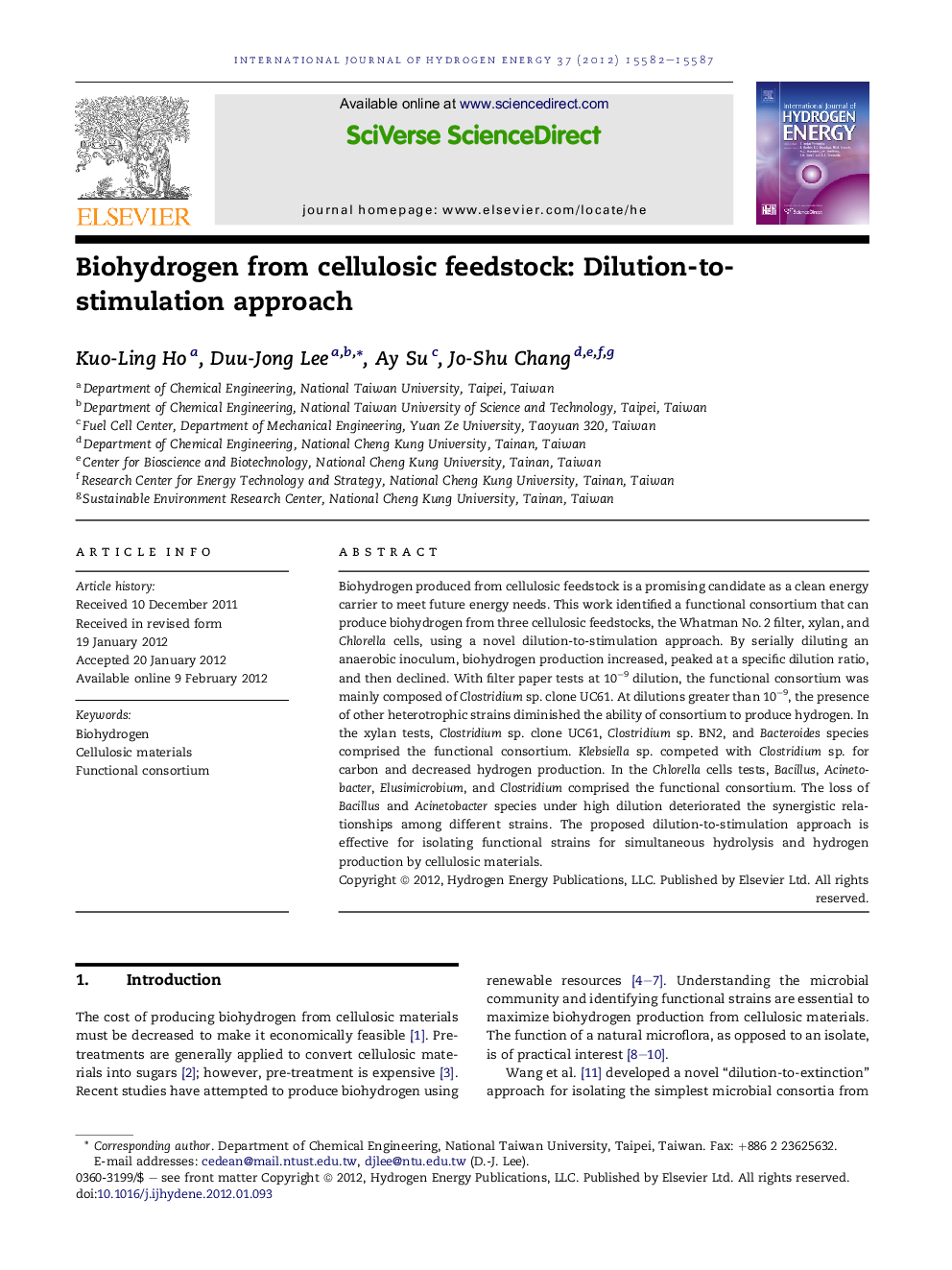| Article ID | Journal | Published Year | Pages | File Type |
|---|---|---|---|---|
| 1274570 | International Journal of Hydrogen Energy | 2012 | 6 Pages |
Biohydrogen produced from cellulosic feedstock is a promising candidate as a clean energy carrier to meet future energy needs. This work identified a functional consortium that can produce biohydrogen from three cellulosic feedstocks, the Whatman No. 2 filter, xylan, and Chlorella cells, using a novel dilution-to-stimulation approach. By serially diluting an anaerobic inoculum, biohydrogen production increased, peaked at a specific dilution ratio, and then declined. With filter paper tests at 10−9 dilution, the functional consortium was mainly composed of Clostridium sp. clone UC61. At dilutions greater than 10−9, the presence of other heterotrophic strains diminished the ability of consortium to produce hydrogen. In the xylan tests, Clostridium sp. clone UC61, Clostridium sp. BN2, and Bacteroides species comprised the functional consortium. Klebsiella sp. competed with Clostridium sp. for carbon and decreased hydrogen production. In the Chlorella cells tests, Bacillus, Acinetobacter, Elusimicrobium, and Clostridium comprised the functional consortium. The loss of Bacillus and Acinetobacter species under high dilution deteriorated the synergistic relationships among different strains. The proposed dilution-to-stimulation approach is effective for isolating functional strains for simultaneous hydrolysis and hydrogen production by cellulosic materials.
► The functional consortium that can produce bioH2 from three cellulosic feedstocks was identified. ► The dilution-to-stimulation approach was for the first time adopted. ► Different functional strains for simultaneous hydrolysis and hydrogen production were found.
